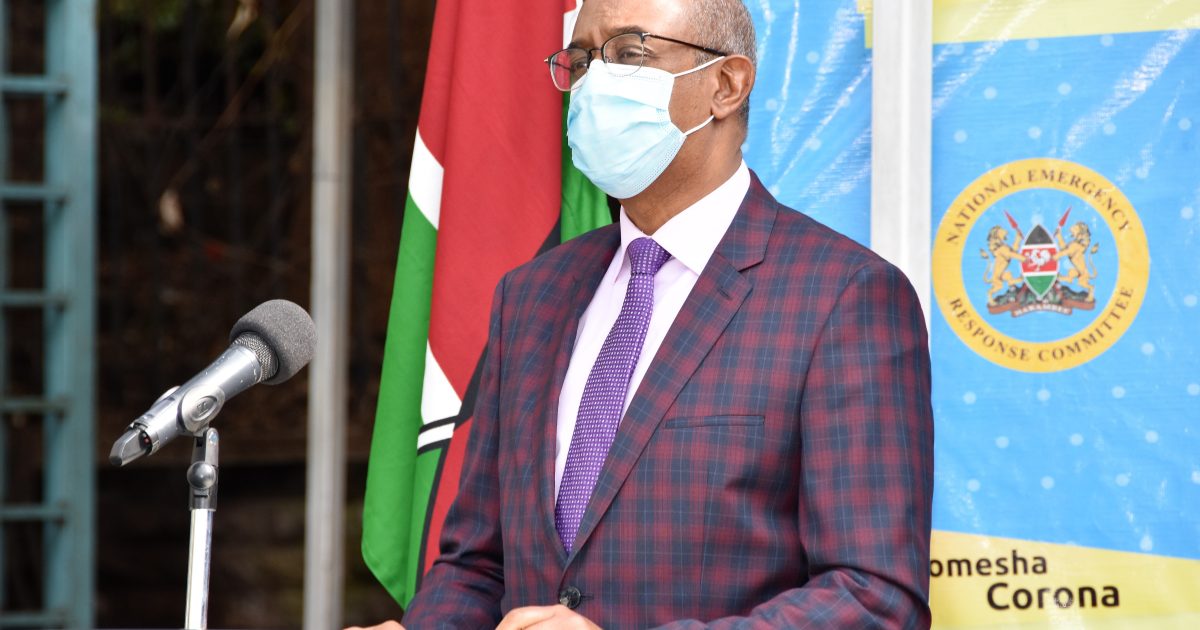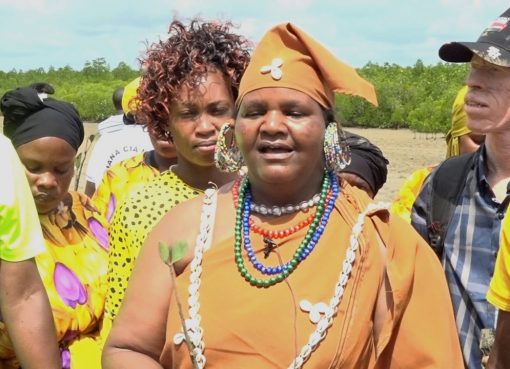Persons Living with Sickle Cell Disease (PLWSCD), are at a higher risk of getting infected with COVID-19 Health Chief Administrative Secretary (CAS) Dr. Rashid Aman has said.
Sickle Cell, is a genetic disease characterized by a change in the shape of a red blood cell, from a smooth circular shape, to a crescent shape, which can result in the blockage of small blood vessels
The CAS expressed fears that such patients were more likely to get severe Covid 19 illness if they get infected due to their impaired immunity resulting from blood disorder
Speaking during the Covid 19 briefing at Afya house ,Dr. Rashid called upon PLWSCD to strictly observe the precautionary preventive measures for COVID-19..
“During this period of Coronavirus pandemic, persons living with sickle cell disease are advised, to ensure they keep a minimum of one-month supply of medication at all timesa$ he said
In addition, Dr. Rashid said they should consult their healthcare providers should they experience COVID-19 symptoms.
Interventions to control the disease include early diagnosis, provision of prompt and effective management, advocacy, communication and social mobilization for screening, and genetic counseling, during premarital courtship, the CAS said .
Globally, the world is in marking the World Sickle Cell Diseases Day and Dr. Rashid said the ministry together with stakeholders, have developed guidelines for managing the disease to be rolled out soon.
This, he added will help to improve the quality of care offered at the health facilities and community levels.
As pertains to the Covid-19 situation, the CAS said that the country recorded 117 people who have tested positive for Coronavirus disease, from a sample size of 3,043 in the last 24 hours.
The new positive cases push confirmed cases to 4,374 in the country and the total tests carried out so far are at 133,541.
From the positive cases, dr. Rashid noted that 112 are Kenyans, and 5 are foreigners, while 83 are males and 34 are females with the youngest being 11 years while the oldest is 75.
The distribution of the cases by Counties is Nairobi has 51 cases, Mombasa (22), Kajiado (18), Kiambu (6), Nakuru (5), Garissa (5), Machakos (3), Kericho, Busia and Uasin Gishu have (2) cases each, while Wajir, one (1) case.
By sub counties, the distribution is Nairobi, the 51 cases are from; Kibra, (8), Langata, (8), Makadara, (6), Dagoretti North, (6), Kamukunji, (4), Embakasi East, (4), Embakasi North, (3), Embakasi South, (3), Mathare, (2), Ruaraka, (2), Embakasi Central, (2) while Embakasi West, Starehe and Kasarani, one (1) case each.
In Mombasa, the (22) cases are from Mvita, (8), Kisauni, (5), Changamwe, (4), Likoni, (3), while Jomvu and Nyali have one (1) case each. In Kajiado, the 18 cases are from Loitokitok, (12), Kajiado Central and Kajiado East two (2) cases each, while Kajiado North and Kajiado West have one (1) case each.
In Kiambu, the 6 cases are from Thika (3), Kiambu Town, Limuru and Lari have one (1) case each. In Nakuru all the five (5) cases are from Naivasha, while the five (5) cases in Garissa are all from Daadab refugee camp. In Machakos, the three (3) cases are from Athi River.
In Kericho the two (2) cases are from Ainamoi, while in Busia, the two (2) cases are from Teso North and Matayos. In Uasin Gishu, the two (2) cases are from Kapseret and soy, while the case in Wajir is from Wajir West.
The CAS noted that the government has today discharged discharged 91 patients from various hospitals, bringing the total number of recoveries to 1,550 but said the country has also lost two (2) patients to the disease bringing the total fatality rate to 119.
From the rising Numbers especially in Nairobis areas of Westlands, Lavington, Kileleshwa and Hurlingham, Dr. Rashid said that the spread of the virus in these areas is being attributed to information that groups of young people are organizing house parties.
“These activities are being conducted with little regard to social distancing requirement. I want to remind Kenyans that avoidance of social gatherings is among the containment measures of coronavirus disease and I want to appeal to our people to take individual responsibility, in observing the measures that have been advocated for by the Ministry, failure to which this disease will be difficult to contain”, the CAS said .
Acting, director General Dr. Patrick Amoth said the deaths that occurred today were from a 5 year old from Daadab camp and the other is from a 46 year old female from Thika town
He emphasized that young people should know that they are not immune from contracting the Covid 19 warning that if they get the serious type they can also die.
At this time when the premier league football matches are beginning though with empty stadiums, Dr. Amoth warned young people who congregate to watch the matches to wear masks and also maintain the social and physical distance .
Young people are not immune one from contracting Covid especially if you get serious type of Covid, he added.
“Yesterday we reported a case of a death without underlying condition and as the positive number increases, we will have more deaths and this will not apply to high risk group but extend to all age cords”, Dr. Amoth warned.
On the issue of contact tracing especially for the 140 people who had given the wrong information, Dr. Amoth said that currently they are using IDs and Passport numbers so that they can be able to go back to the data and be able to get them.
Out of the 140 cases that were being traced, he explained that a few of them were from outside Kenya and once they were caught up , they gave various reasons especially in the targeted areas such as Eastleigh where they were living illegally.
The DG however said that all the 140 cases have been removed from the contact while for state house personell , he explained that testing is being done for the staff after every two to three weeks and explaining that they have been getting support from statehouse since their contact tracing had been collected from huge sample.
The United Nations General Assembly, established the World Sickle Cell Day in the year 2008, to increase public knowledge and raise awareness of Sickle Cell Disease while highlighting the struggles of living with sickle cell disease sufferers and their care givers. This year’s theme is “Break the silence: and Shine the light on Sickle cell disease.”
By Wangari Ndirangu





